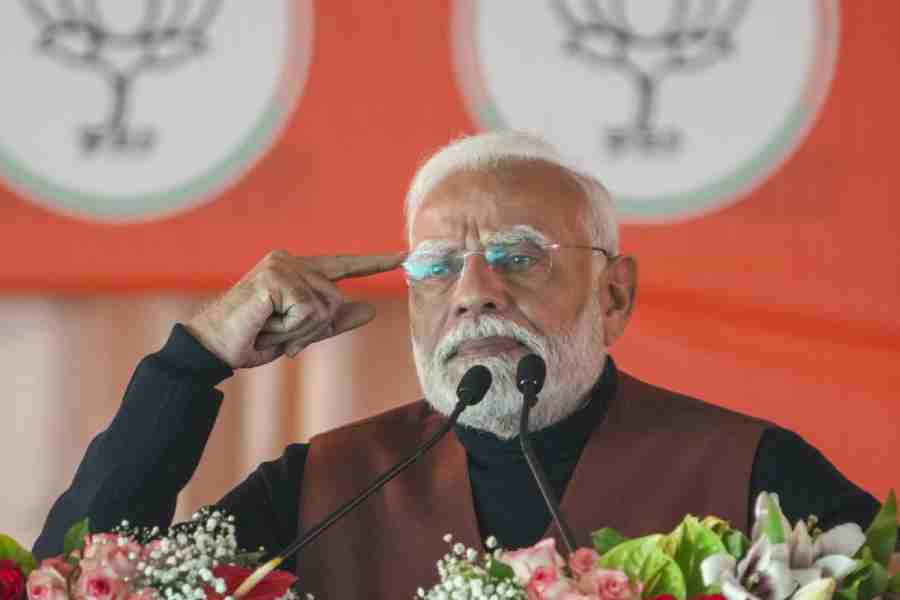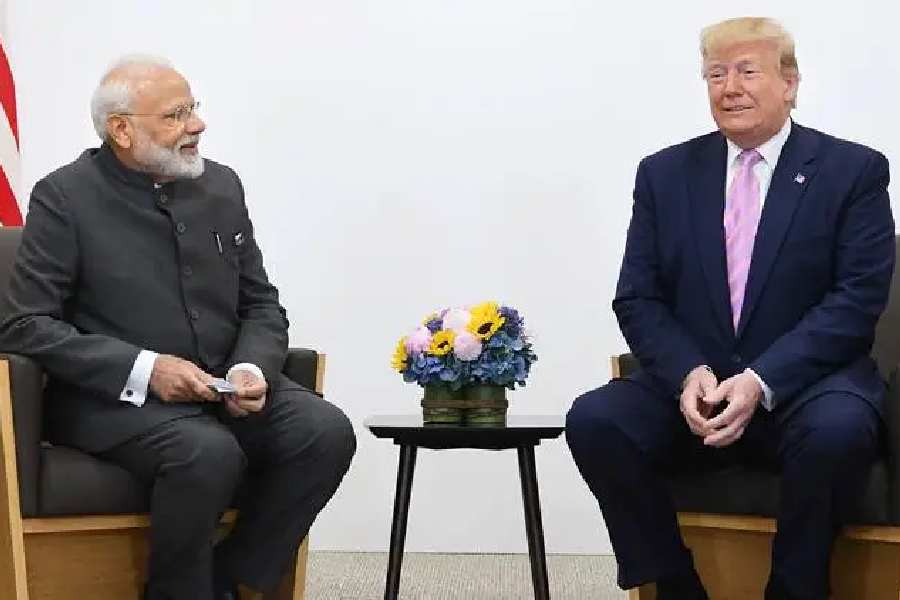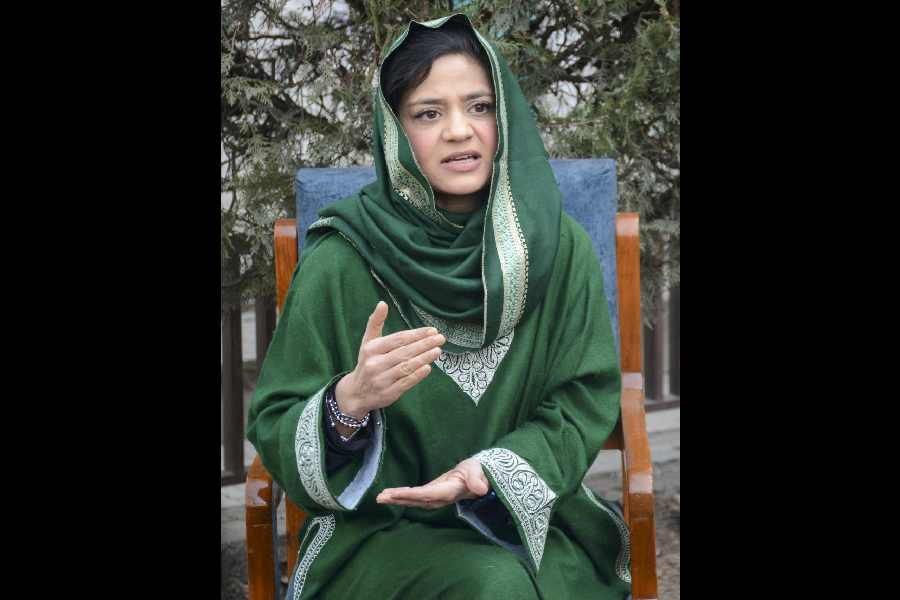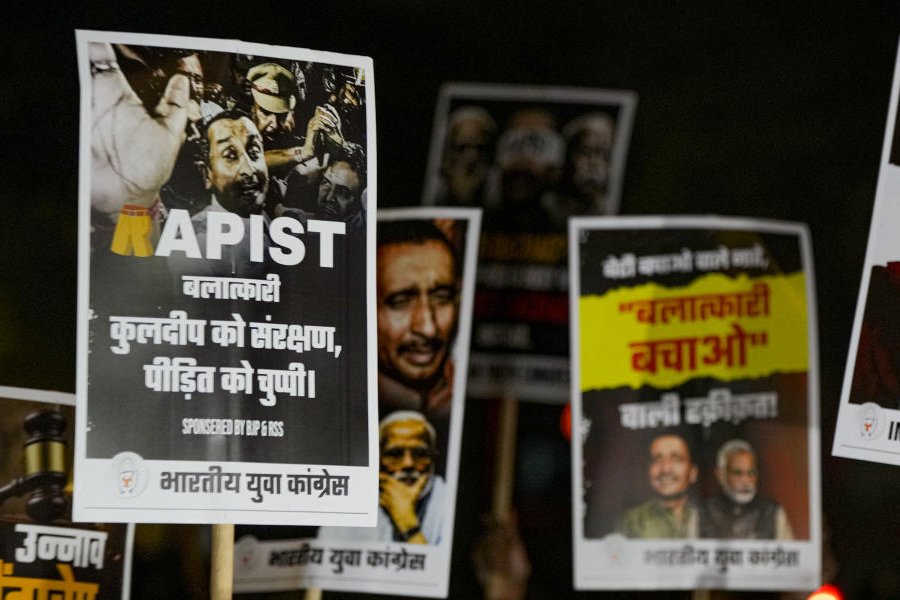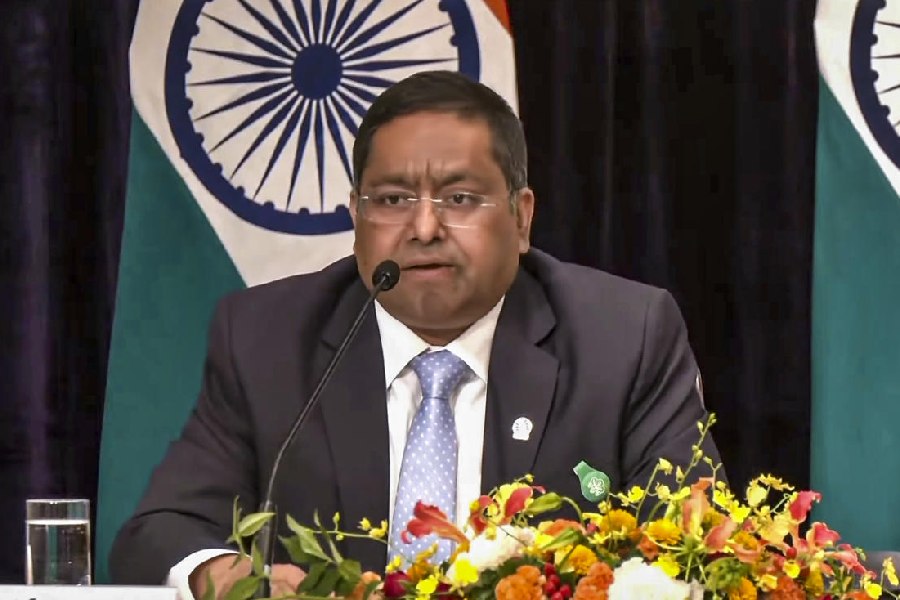Prime Minister Narendra Modi is talking tough, insisting that India will not bend to US President Donald Trump's demands to stop importing Russian oil. But in reality, India has few cards it can play in this high-stakes global poker game. Unlike China, India lacks the kind of leverage, such as rare earth supplies, that could pressure Trump into offering better terms in a trade deal.
Consider the tight corner India has been pushed into. It could possibly stop all imports of Russian oil before the 21-day deadline comes into force and thus dodge the 25 per cent extra tariff that Trump has threatened to impose.
But there's a catch: that might send oil prices shooting through the roof both in India and the world. Oil minister Hardeep Puri has warned that prices might soar to around $130 or $140 a barrel from the current $68.
Alternatively, India can hang tough and refuse to stop importing Russian oil. It will then face crippling 50 per cent tariffs that will sink most of its exports to the US.
India’s trade with the US, its largest export market, is worth a massive $87 billion. According to Bloomberg Economics, if India keeps buying Russian oil and faces the full 50 per cent US tariff, exports to the US could fall by 60 per cent, pulling down India’s GDP by around 1 per cent this year from forecast 6.3 per cent expansion and 1.1 per cent over the medium term.
Morgan Stanley says the tariffs could shave as much as 1.2 per cent from growth, Goldman Sachs put it at 0.6 per cent.
Moody’s comes in at the low end at just 0.3 per cent. But it warns beyond 2025, the tariff gap compared with Asia-Pacific rivals would “severely curtail” India's manufacturing development ambitions.. On the flip side, ditching Russian oil could inflate India’s annual import bill and push up inflation which is highly politically sensitive.
The savings right now from buying discounted Russian oil? They are a comparatively modest $3.8 billion in the past year, according to credit rating firm ICRA’s calculations. So the answer to India’s dilemma might seem obvious: stop buying Russian crude.
“You look at the size of India's trade with the US, and look at how much savings India gets from buying Russia crude, it's pretty clear what India would do," said Warren Patterson, commodities strategy head at ING Groep NV in Singapore. "Are you going to risk up to $87 billion worth of exports to the US in order to save a few billion from oil discounts?”
But nothing is simple. It’s way more complicated than that.
Since the start of the Ukraine war, India has become the top buyer of Russian seaborne crude, with 37 per cent of its oil imports now coming from Russia, up from a scant 0.02 per cent before 2022. The arithmetic made sense: Western sanctions forced Moscow to sell at a discount, giving India barrels that were at one point $20-plus cheaper than Middle Eastern crude. But that discount has narrowed to around $4 a barrel. That's still a considerable saving.
Still, if India stopped buying Russian crude, global supply would tighten by up to 1.5-2 million barrels per day (bpd), unless Russia quickly found alternative buyers, which would be challenging due to sanctions.
And the thing is: rising oil prices would hurt not just India but also the US and other Western oil-importing countries. "Ironically, the US and its allies would suffer at the pump," says Bloomberg oil strategist Julian Lee.
At the moment, the oil market appears to be betting that India will not back down and stop buying Russian oil. "India is standing its ground. Had India said we are going to halt Russia crude purchases, that would have been a major concern to the market, you would have seen prices spiking," said one oil analyst.
Modi has walked a fine line, deepening ties with Washington while keeping up relations with Moscow. But Trump’s tariff war may be forcing his hand. He’s understandably wary of losing his strongman image by backing down to the US with state elections looming.
Modi, though worried about domestic political blowback, is in no mood to revisit major agriculture policy changes -- another of Trump’s key demands – and open up the fast farming sector to US competition.
He learned his lesson about not liberalising the market in 2021, when a nationwide farmers' protest forced him into a rare retreat.
“India will protect its farmers and fishermen even if we have to pay a heavy price,” Modi said, urging people to buy domestically made goods.
He reaffirmed India’s stance in a nearly hour-long phone call Thursday with Brazilian President Luiz Inácio Lula da Silva, whose country also faces 50 per cent tariffs. Both pledged to strengthen bilateral trade ties.
Modi is expected to head to China for the first time in seven years this month, against the backdrop of worsening ties with the US. But the cost of a no-tariff compromise with the US is high.
The 50 per cent hike in tariffs would make pretty well everything India exports to the US uncompetitive, experts say.
"This move is a severe setback for Indian exports, with nearly 55 per cent of our shipments to the US market directly affected,” Federation of Indian Export Organisations director general Ajay Sahai said.
“The 50 per cent reciprocal tariff effectively imposes a cost burden, placing our exporters at a 30-35 per cent competitive disadvantage compared to peers," Sahai added.
Textiles and gems and jewellery would take a massive hit. “The United States is our single largest market, accounting for over $10 billion in exports – nearly 30 per cent of our industry’s total global trade. A blanket tariff of this magnitude is severely devastating for the sector,” said Kirit Bhansali, chairman of the Gems & Jewellery Export Promotion Council.
“What adds to the concern is that competing manufacturing hubs such as Turkey, Vietnam and Thailand continue to enjoy significantly lower tariffs of 15 per cent, 20 per cent and 19 per cent,” Bhansali added. American consumers are unlikely to splurge on Indian jewellery if prices surge due to the 50 per cent tariff.
Textile exporters who sell about $12 billion worth of everything from bedlinen to T-shirts will also find it virtually impossible to sell products in the face of tariff competition from countries like Bangladesh (20 per cent), Vietnam (20 per cent) and Pakistan (19 per cent).
Trump, meanwhile, has warned that tariffs on pharmaceuticals could eventually soar to 250 per cent as he wants more drugs made in the US. Nearly one-third of Indian pharma exports -- around $8.7 billion worth -- go to the US. For the moment, though, the pharmaceutical industry appears safe from Trump’s levies.
“Tariffs on Indian pharma would be counterproductive, ultimately burdening American consumers. Indian companies manufacture low-cost generics, not high-margin products, so any tariff costs would pass directly to US consumers," Pharmexcil chairman Namit Joshi said.
Replicating India's pharmaceutical capabilities would take three-to-five years at minimum, with significant challenges in achieving comparable scale, cost efficiency and talent depth, he added.
The tariffs could also undercut Modi’s much-touted “Make in India” efforts to position India as an alternative manufacturing hub to China amid global supply chain diversification.
For now, though, Apple phones assembled in India appear to be safe. Apple has bet big on Indian production, both to tap local demand and reduce its dependency on China. But if tensions escalate, that arrangement may not last.
Then there’s the threat looming over India’s IT sector. While Trump hasn’t made any official moves yet, there are fears that he could clamp down on H1-B and L-1 visas — which are vital to keeping costs down and sending manpower from India for projects.
Some analysts believe that this latest Trump threat to double tariffs is just a negotiating ploy to put pressure on Russia to end its war against Ukraine.
“Trump is juggling a lot of balls and trying to put pressure on Russia through India,” said Richard Redogloia, chief executive of Matrix Global Holdings.
“Having lived in New York for 20 years while Donald Trump was a real estate developer, I’ve learned to take what he says with a grain of salt. And increasingly, the market is doing the same,” Redoglia told ET Now.

